
This site celebrates the life and work of sculptor John
Cassidy (1860 - 1939).

John Strachan. Photograph from Manchester University Magazine
Vol.4, November 1908, facing page 1.
The Christie Library
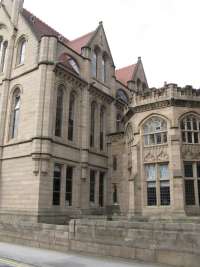
The Christie Library of the University of Manchester,
part of the group of buildings, designed by Alfred Waterhouse and
his son Paul, around the University's quadrangle in Oxford Road,
was opened in 1898. The buildings are all listed
as Historic Buildings, Grade II*.
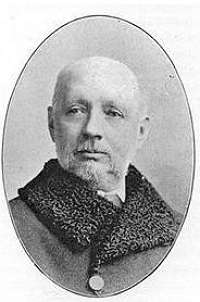
Construction was paid for by Richard Copley Christie (1830 -
1901), portrayed above. He was a lawyer, Professor at Owens College,
Chancellor of the Anglican Diocese of Manchester, a
bibliophile and library
enthusiast. He was the second son of Lorenzo Christie of Edale,
Derbyshire, a textile mill-owner.
He was a friend of the great Stockport-born engineer and philanthropist
Sir Joseph
Whitworth (1803-1887); both had lived for a while in the Derbyshire
village of Darley Dale. On Whitworth's death, Christie was one of three
legatees to whom
was bequeathed a residuary estate of
more than half a million pounds in equal shares for their own use,
'they being
each of them aware of the objects to which these funds would have been
applied by the testator, had he been able to carry out the plans that
had occupied him so long.'
Much of the money went to further the aims of Owens College,
and Christie paid for the erection of the Whitworth Hall which forms
the frontage of the Oxford Road buildings, as well as the Library. His
name is also well-known in Manchester for the Christie Hospital for
cancer patients. On his death in 1901 he bequeathed his large
collection
of over 150,000 books to the Christie Library.
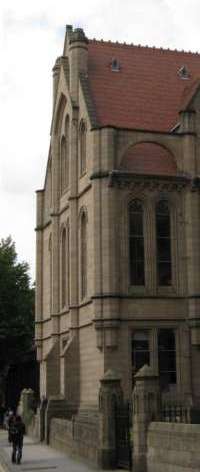
On its opening, the Christie building became the main library
of the
College, replacing the earlier library withing the original College
building, for all subject areas
except medicine which retained its own library within the adjacent
Medical School. In 1936, on the opening of the new Arts Library in
nearby
Lime Grove, the Christie building became the Science Library, a role it
retained
until 1981 when a large extension to the Arts Library was opened
nearby,
enabling it to house material in all subjects as the Main Library.
When the University Library merged with the John Rylands
Library in
1972 to become the John Rylands University Library, Robert Copley
Christie's
collections were transferred from the Arts Library to the John Rylands
Library in Deansgate to join the Special Collections there.
The Main Library building, which is on Burlington Street, not far from
the entrance to the Bistro, is now known as the John Rylands University
Library Main Library, not to be confused (as it often has been) with
the John Rylands Library building on Deansgate in the City Centre.
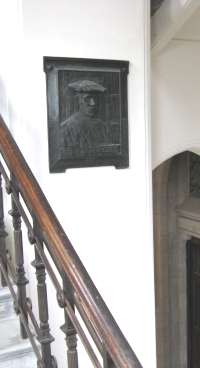
After 1981 the Christie Library ceased to be a library; some rooms were used as offices for the University administration, but the grand reading room on the first floor remained unused until the 1990s when it was transformed, with as few changes as possible, into 'Christie's Bistro', a pleasant space, now open to the public (Mondays-Fridays 9am - 5pm except public and University holidays), in which to eat and relax. Visitors to the Bistro can view the Strachan memorial as they climb the stairs, and in the Bistro itself is a collection of marble busts, most of which carry no name of either sculptor or subject. As far as we know, none of these busts are the work of Cassidy; any information about any of them them would be welcome.
Our thanks are extended to Janet Wallwork of the John Rylands University Library Archives team for inspiring this page and providing source material.
Links and references
P.G. [Peter Giles], ‘Strachan, John (1862–1907)’, Dictionary of National Biography. Second Edition, Second Supplement, 1912. Vol. 3, p.435-436. (Google Books)
Peter Giles, ‘Strachan, John (1862–1907)’, rev. Mark Pottle, Oxford Dictionary of National Biography, Oxford University Press, 2004
George Calder. 'John Strachan, LL.D.' The Celtic Review Vol. 4, No. 14 (Oct., 1907), pp. 188-191.
Full text of: John Strachan, An Introduction to Early Welsh (archive.org)
A. W. Ward, Christie, Richard Copley (1830–1901), rev. M. C. Curthoys, Oxford Dictionary of National Biography, Oxford University Press, 2004
Other memorials

Also on the Christie staircase are a rather beautiful stained-glass window commemorating Richard Copley Christie ...
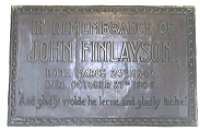
... and a memorial plaque to John Finlayson (1840 - 1906), born near Wick in Caithness, northern Scotland, a cashier at the Bank of England's Manchester office, who lived near the University at 4 Daisy Bank Road, Victoria Park. He never married, and spent much of his spare time attending evening classes, buying and reading books, and taking part in University life. He bequeathed a large part of his library, which 'filled every corner of his house', to the University. His obituarist in the Manchester Guardian (20 October 1906, p.14), C.H. Hertford, tells of an 'indefatigable layman in letters, qualities never very common in the members of a great business community.'
The plaque carries a quotation 'And gladly wolde he lerne and gladly teche.' This is from the prologue of Chaucer's Canterbury Tales, describing the Clerk (lines 305-310) which can be expressed in in modern English:
He took utmost care and heed for his study
Not one word spoke he more than was necessary
And that was said with due formality and dignity
And short and lively, and full of high morality
Filled with moral virtue was his speech
And gladly would he learn and gladly teach.
A motto for us all, perhaps.
Assorted busts
A selection of the marble busts in the Christie in 2010.
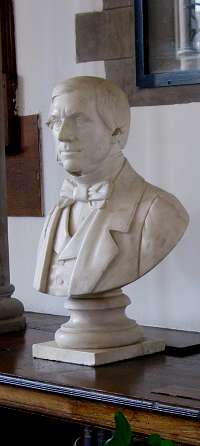
Who's this handsome character?

King Edward VII. Thought to be by Albert Bruce-Joy (1842-1924) commissioned by the University in 1910.
Professor John Strachan (1908)
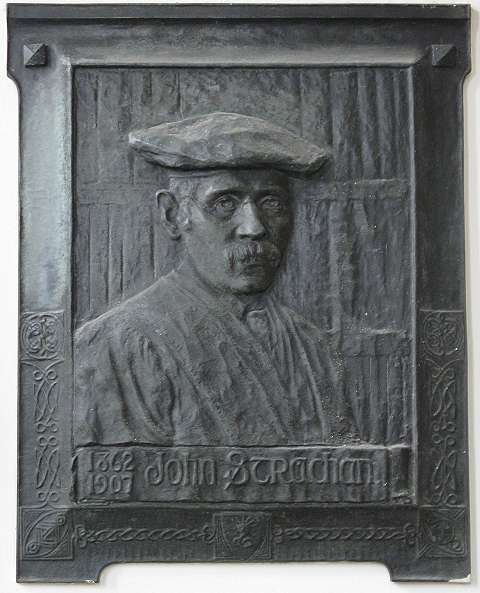
Catalogue no. 1908.02
John Strachan was born on a farm, 'Brae', near Keith, Banffshire on 31 January 1862, the only son of farmer James Strachan by his wife Ann Kerr. He attended the Grammar School in Keith, before enrolling at Aberdeen University in 1877 at the age of fifteen. In 1881, having gained a first-class honours degree, he continued his studies at Pembroke College, Cambridge, becoming a Fellow of that college, and in 1885, aged just 23, was elected Hulme Professor of Greek at Owens College in Manchester, in succession to J.G Greenwood, holder of the post since 1857, who has also served as Principal of the College. As time went by, however, he devoted some of his time to the study of the Celtic languages. In addition, from 1890 he was Professor of Sanskrit and Comparative Philology, He retained the posts from 1904 when the College became the Victoria University of Manchester, which was the official name of the University until 2004, although it was always generally known as the University of Manchester, or colloquially as 'Owens' .
In 1886 he married Mina, eldest daughter of Dr James Grant, his old schoolmaster, and they had two sons and six daughters.
His last published work, An Introduction to Early Welsh, incomplete at his death, was based on courses of lectures on Welsh grammar and literature given by him at the University of Manchester during the sessions 1905-6 and 1906-7. He worked on the book through the summer of 1907, and in September visited the Peniarth Estate, near Tywyn in Wales to study the historic manuscripts in the collection of the Wynne family there (since 1969 the collection has been in the National Library of Wales.) Unfortunately he 'caught a chill', which developed into Pneumonia, and he died on 25 September 1907 at his home, 'Thorndale', Hilton Park, Prestwich, in northern Manchester. His widow was granted a pension of £80 from the Civil List; she died in 1950, aged 86.
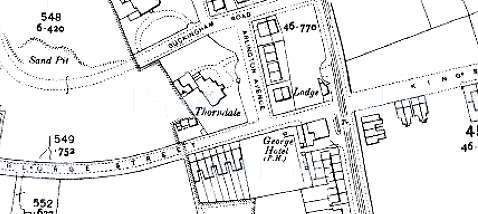
'Thorndale', seen on the 1909 map above, was a Victorian mansion which did not survive long after Strachan's death: a 1922 map shows 18 semi-detached houses on the site.
His last work was completed by his colleagues, led by Professor Kuno Meyer of Dublin, and published in 1909 as No. 40 in the University of Manchester Publications, Celtic Series. Publication was delayed by a lawsuit brought by a Welsh professor who felt that Strachan's text did not sufficiently acknowledge his own publications.
There was a desire to commemorate him at the University, and a memorial by Cassidy, Manchester best sculptor, was considered. Cassidy's letter in response to the enquiry survives in the Vice-Chancellor's Archive (reference number VCA/6/144):
Plymouth Grove
Manchester
To Vice-Chancellor Hopkinson:
I regret I have not had an earlier opportunity of letting you know about the probable cost of a marble memorial to the late Professor Strachan. I page a visit to the College yesterday and had a look at the two on the stairs which you kindly referred to. I find they are life size reliefs carved on 3" slabs of Statuary Marble.
I shall be pleased to execute a similar portrait of the late professor for the sum of Sixty Pounds.
I remain Sir, yours faithfully
John Cassidy.
2nd April 1908.
In the event, what was produced was a life-size portrait cast in bronze rather than marble, for the same price of £60. The reason for the change of material remains to be discovered: perhaps suitable marble could not be found for the price, or maybe the Professor's spectacles would have been difficult to reproduce in that material. The work does not have a visible signature, but the archive material proves it to be a genuine Cassidy.
In the Council Minutes of the University dated 12 May 1909, there is a reference to a letter sent from Professor Tait, Secretary to the Strachan Memorial Committee, offering a 'medallion' of Strachan 'by Mr Cassidy' requesting it should be placed on the staircase of the Library. Also that the balance of the fund should be spent on Celtic books for the Library.
In the University Archives is a minute book of the Committee, which has a list of subscribers, and records of money raised. There are also letters sent to Professor Lamb, the Treasurer of the Committee, and is one from Cassidy thanking them for prompt payment of the cost of £60 and enclosing a receipt.On 27 October 1909 the Council had a letter from Professor Lamb, Treasurer of the Committee, enclosing £12.0s 4d, the balance of the fund, to be spent on Celtic books for the Library.
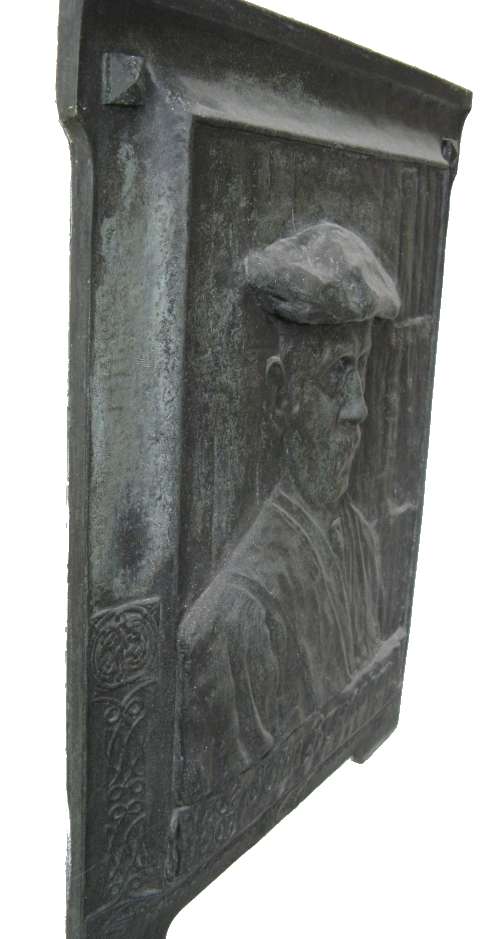
The memorial was unveiled in a ceremony on 25 May 1909, mounted, as planned, on the staircase of the Christie Library building, where it remains today. Its position allows it to be viewed from an acute angle from the staircase, showing that it is in deeper relief than many such 'medallions', the head being modelled in three dimensions to behind the ears. Celtic decorations are noticeable in the border of the work, and also the crest of the University.
Against a background of library books, he is portrayed in the academic dress copied from the photograph, with on his head the soft 'Tudor Bonnet' associated with the holders of doctorates. We'd be pleased to hear from anyone who can positively identify the significance of the particular garb. In 1900 he was made an honorary Doctor of Laws by the University of Aberdeen; perhaps the photograph was taken then.
A small mystery attaches to the work: the writer (Peter Giles) of his entry in the contemporary edition of Dictionary of National Biography states that 'No good portrait of Strachan exists, and the bronze bust in the possession of Manchester University only faintly resembles him' - and yet the memorial, which is not a bust, is clearly a faithful interpretation by Cassidy of the photograph reproduced here. The current edition of the DNB article, revised by Mark Pottle, omits the artistic criticism but still refers to a bust.
His papers and collection of 600 books were purchased by his friends after his death and presented to the University Library where they remain.
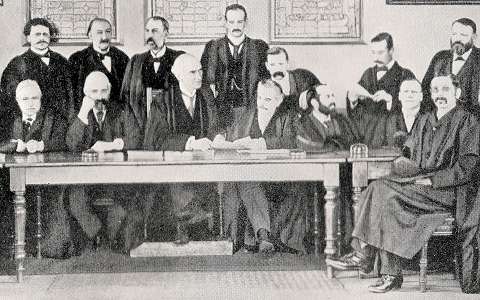
This detail from a picture of the University Senate in 1900 captures three Cassidy subjects in one view: William Boyd Dawkins, Professor of Geology (front, far left), Vice-Chancellor Alfred Hopkinson (tall figure, front row, third from left) and John Strachan (right foreground.)
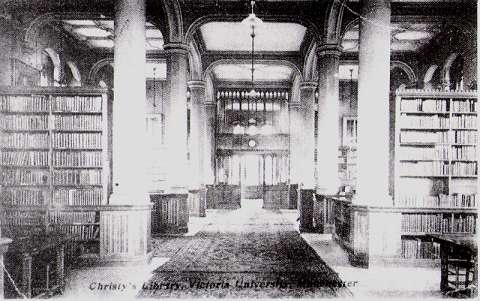
The Christie Library reading room, from an old postcard.
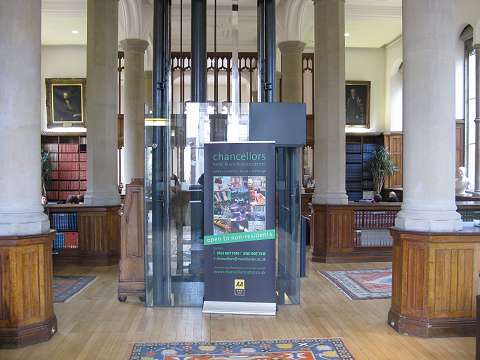
The view seen in the postcard above is somewhat obscured in 2011 because of the lift which has been installed during conversion to a Bistro.
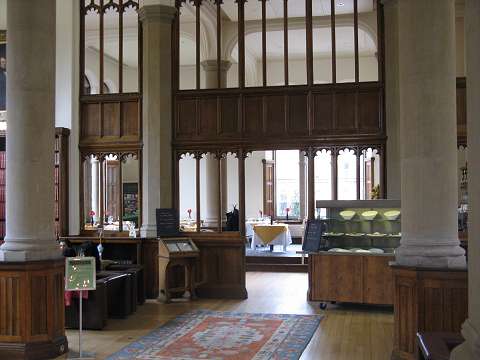
The principal features of the room, including the oak screen towards one end, have been carefully retained.
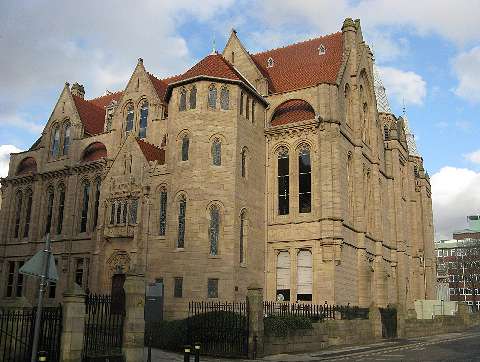
The Christie Library building, seen from Burlington Street in February 2011. To view the memorial, enter by the bistro door, centre left of the picture, and climb the stairs immediately inside. The building is closed weekends and public holidays.
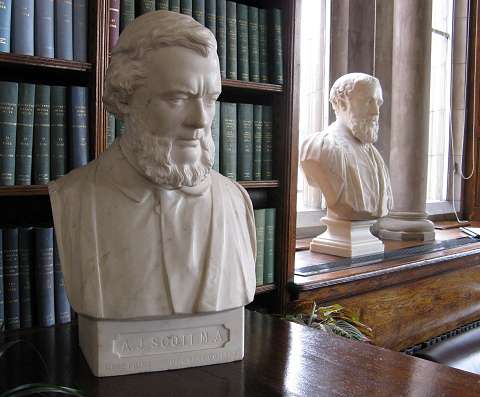
Above left, Professor A.J. Scott, first principal of Owens College. Believed to have been made in 1860 by Henry Stormouth Liefchild (1823-1884). Behind is Professor William Stanley Jevons, presented in his memory by his friends and admirers in 1884. The sculptor was E. Roscoe Mullins. Details of the busts given here are from Public Sculpture of Greater Manchester by Terry Wyke and Harry Cocks, p.102-103.

The Christie window.
Personal note by Charlie Hulme
I know the Christie building very well, and have happy memories of it, as I worked there as an a assistant librarian from 1971 to 1975, my first job after leaving University. I passed the Strachan memorial many times, but at the time I knew nothing of John Cassidy or his work.
I dedicate this page to all those who worked in the Christie Library, especially those I've had the pleasure to have known and worked with.
Text by Charlie Hulme, February 2011.